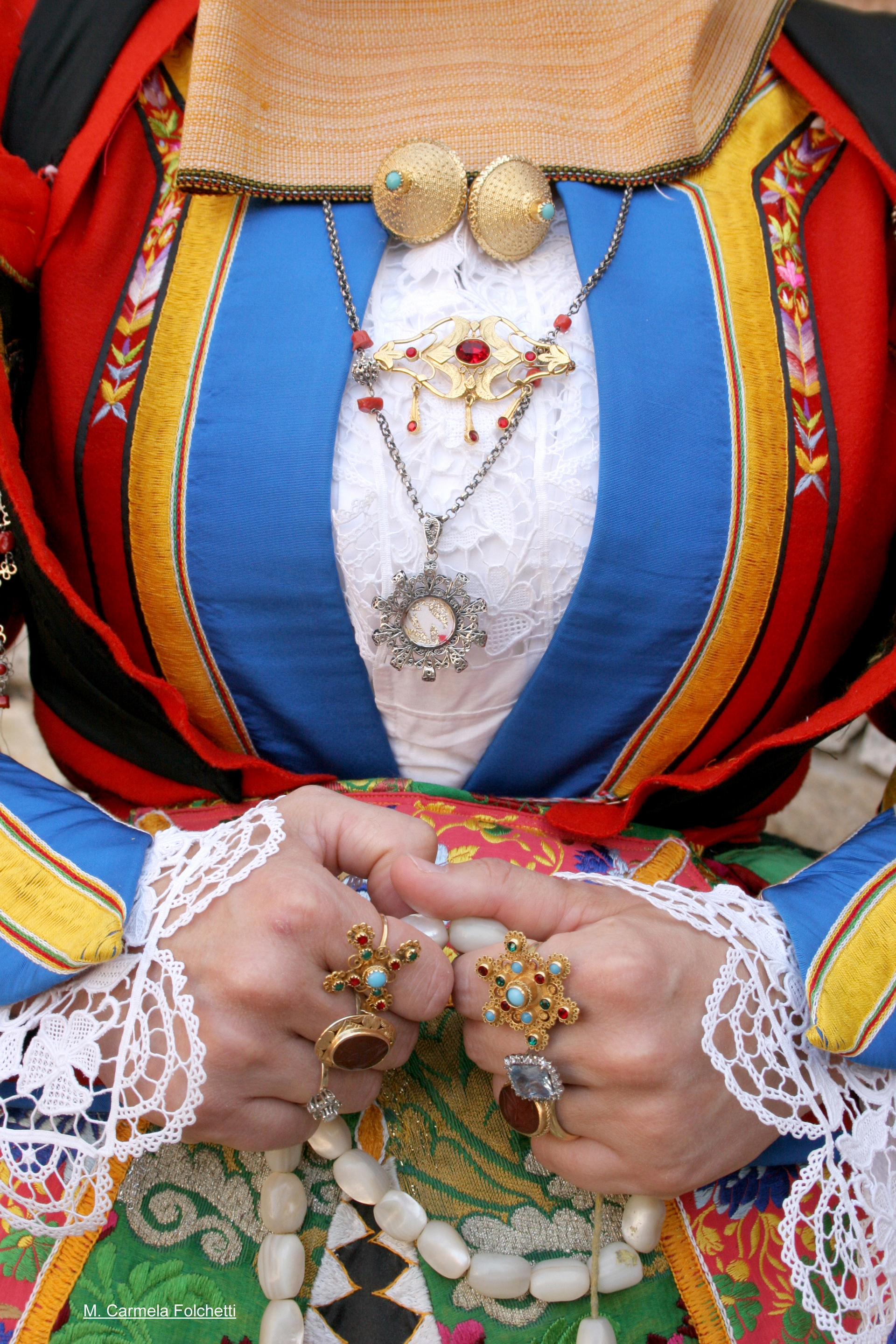The community of Orgosolo has distinguished itself over the years for the great strength of will and fighting spirit of its inhabitants that still in the last century showed how a small crowd of men motivated by a strong will, can change the fate of history.
The signs of human presence in the territory date back to the Neolithic and are more numerous as we move toward the nuragic age: menhirs, dolmens, domus de janas, nuraghi, tombe dei gigantic and villages dot the area that is rich in archaeological remains.
Even the domination of the Romans and the Byzantines have left traces of their passage but it is from the Middle Ages that we begin to have more precise information on the center: the name appears for the first time in the documents on the payment of ecclesiastical tithes in 1341 as Orgosuli, then Orgosula and finally Orgosolo.
Until the thirteenth century was part of the curatoria of Dore comprised in the Giudicato of Torres. After the fall of the kingdom of Logudoro was included in that of Arborea on the border with the Giudicato di Gallura to which it was included the near village of Locoe. In the giudicati organization administration was entrusted to maiore de villa flanked by various figures. Some of these were still in the nineteenth century: the magistracy council was chaired by the mayor who opted for a greater justice, one of the vidazzone and the chief of the barracelli.
In the XIV century the judge of Arborea Mariano IV undertook a long war for the independence of the Island and managed to conquer it almost completely, repulsing the Iberian invaders to few fortresses. In the war prevailed the Catalan-aragonese and the village was surrended in 1430 to the marquis of Oristano. In this way, in the years ’70 of the century, the villa found itself involved in the revolt of Leonardo Alagon against the Carroz, represented by the iberic nobility, who won, whose linage were wiped out in a very few years.
In the course of the Spanish domination and, subsequently, the Savoy were different families to which Orgosolo was enfeoffed. Thanks to the tenacity of its inhabitants they maintained the right to collective use of the land even after the edict of the chiudendes, in 1820, unleashed a wave of revolts throughout the island severely repressed.
During the ’900 the center tied its name to the murals phenomenon an important artistic current born to challenge social injustice, which has given rise to numerous works today is the symbol of the great cultural ferment still alive in the town. In 1969 the orgolesi were the protagonists of the popular mobilization of Pratobello abd managed to prevent the installation of a military polygon a few kilometers from the town center.
Breathtaking scenery, unspoilt forests and great natural phenomena characterize the mountainous complex of the Supramonte in the territory of Orgosolo.
This is a vast plateau of limestone and dolomite with exceptional rock formations enriched by a rich vegetation fed by abundant water courses underground. The area is included in the National Park of the Gulf of Orosei and the Gennargentu.
Wonderful specimens of holm-oaks, alternating with junipers, maples, oaks, holly and yew between which there are precious endemic species of island flora. Rolling Meadows, which was populated by farmed sheep, alternate with large forests in which there are fauna species typical of the mountains: the mouflon, the wild boar, fox, wild cat, the marten, the garden dormouse, the dormouse, the hare, and numerous birds, among which the partridge, wood pigeon, the chaffinch, the raven of Sardinia, the kestrel, the goshawk, the sparrowhawk and the beautiful golden eagle also live.
To reach some of the most fascinating sites you can take wonderful excursions on the numerous trails that surround the country. Toward the east you will reach the reliefs starting from the del Monte Osposidda, at 914 m. To the north of the mountain is located the provincial road 22 from which you enter an Enlarged de S’Arenargiu which leads to the Supramonte. Along the path we can admire a spectacular view on the Monte Corrasi framed by a boulder which forms a natural arch.
Leaving to the left of Solitta Tip (1206 m) you continue on the road to cuile Taletto, typical example of ancient sheepfold where it was built Su pinnettu (very widespread in the district recovery and dwelling of the pastors), that branches off to the paths to discover the natural beauties and the most spectacular archaeological sites.
Between the rugged landscapes open up some plateaus between the Campu Donanigoro, on the border with Dorgali, and the path to the extraordinary karst dolina of Sercone. Inside the earth is swallowed into a gorge at 685 m above sea level that has created an impressive chasm of about 200 m deep and with a diameter of 400 m. Beautiful secular yew grow here and it is not rare to meet groups of mouflons.
Among the most evocative natural monumental resources, there is the impressive Canyon of the Gorroppu, within walking distance for a long stretch, with its high walls up to 450 m, is one of the deepest in Europe. The waters of the Flumineddu River have been dug for a millennia, the rock creating the deep gorge has become the habitat of several endemic species of Sardinians, including the rare aquilegia Gorroppu with its delicate flowers that vary from blue to white.
Around, surrounded by the forests, on the edge of a high rocky ridge rises the nuraghe Presethu Tortu also called Gorroppu where you will enjoy a beautiful view of the canyon and the near nuraghe Mereu entirely constructed with limestone ashlars which give it a striking white color.
More south of the lovely expanse of Campu Su Mudrecu you enter on the road to the forest of Montes that preserves the ancient leccetta Sas Baddes: Centuries-old trees never subjected to cutting, with unique characters in the whole of the Mediterranean. On ancient penetration ways, probably made in prehistoric times, it is possible to reach the top of Monte Novo San Giovanni (1316 m a.s.l., by the spectacular spires up to 70 meters high.
The Land of artists and the cradle of archaic traditions Orgosolo reveals a vibrant spirit and a deep bond with its roots. The rich archaeological heritage boasts important monuments of the Nuraghic Age: in the surroundings you can visit different menhir and domus de janas among which are reminiscent of those found in Tettene, Istovuzzi and Pandelai.
In the territory you encounter numerous nuragic villages and more than 30 nuraghi . Of great interest is that of Mereu, immersed in the frame of the Supramonte. The structure is constructed of squared ashlars of white limestone that give a particular charm and is formed by a main tower, which preserves the tholos covering (a sort of dome) still intact , and two smaller enclosed by an imposing bastion on the west side. From here you can enjoy a spectacular panorama of the Canyon Gorroppu.
To the north-east and well visible the near nuraghe Presethu Tortu (also called Gorroppu for the proximity to the throat) in an attractive position on the edge of a rocky wall . A great high wall over 3meters testifies the presence of an imposing barbican in defense of the settlement. In the heart of the forest between the two nuraghi, are the remains of a large village and some burials of the time called the tombe dei giganti .
Of the Middle Ages are the ruins of the ancient village of Locoe t o the north of the country, around which are still visible the remains of the parish church dedicated to San Leonardo in addition to those of the churches of Santa Maria, San Paolo and San Marco.
The historical center is characterized by n arrow streets and stone houses enriched by beautiful murales that have brought Orgosolo to international fame. The first murales of political-social mold date back to the end of the sixties of the twentieth century and were made by professor Francesco Del Casino helped by the secondary school students. Following numerous artists have made their contribution by transforming the town into a true open-air museum . Since the years '80 were added other subjects inspired by the scenes everyday life and local traditions.
Between the scenic roads is located the ancient parish church of San Pietro of neoclassical shapes. Erected in the Byzantine age has undergone several changes over the centuries as evidenced by the beautiful spired bell tower in gothic style dating from the fifteenth century.
The town is known for the production of su Lionzu, the refined head scarf that frames the face of women when they wear the traditional dress of Orgosolo . To make this headgear are used silk threads produced by a selected variety of silkworm bred exclusively for this use by a family of artisans that inheritance it from generation to generation . For the warp is used natural silk while the weft is colored with saffron. The precious yarn is patiently made by hand on suitable looms following old methods and accurate compositions.
Orgosolo is one of the centers in Barbagia which handed down the archaic canto a Tenore , proclaimed by UNESCO Oral and Intangible Heritage of Humanity.



